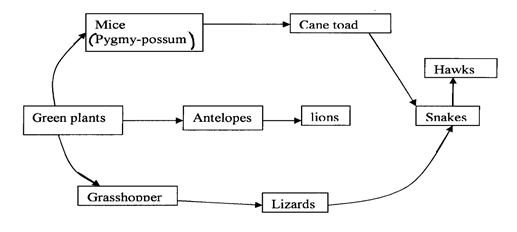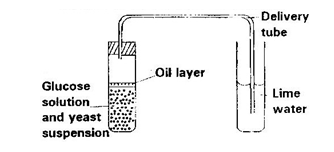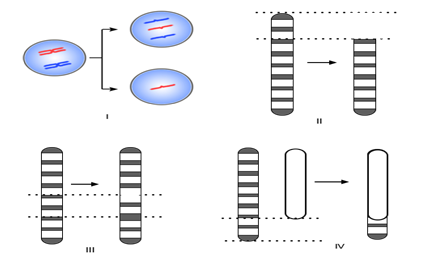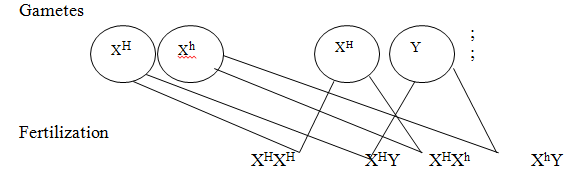SECTION A (40MKS)
Answer ALL the questions in this section in the spaces provided.
-
- Define
- Osmosis (lmk)
- Haemolysis (lmk)
- State the role of active transport in plants. (2mks)
- Why is oxygen important in the process of active transport? (lmk)
- State three properties of the cell membrane (3mks)
- Define
- The diagram below represents a food web in a terrestrial ecosystem.
- Which organism has the fewest number of preys (lmk)
- Construct food chains with snakes as tertiary consumers (2mks)
- State the trophic level occupied by hawks in the food chains constructed in b) above (lmk)
- Describe how capture — recapture method can be used in estimating the population of fishes in a lake. (4mks)
-
- Differentiate between the mode of fertilization in higher plants and in mammals (2mks)
- Explain the role of the following hormones in the female menstrual cycle
- Oestrogen (2mks)
- Luternizing hormone (2mks)
- Give two functions of the placenta during pregnancy (2mks)
- The diagram below shows a set up that was used to demonstrate fermentation.
Glucose solution was boiled and oil added on top of it. The glucose solution was then allowed to cool before adding the yeast suspension.- Why was the glucose solution boiled before adding the yeast suspension? (1mk)
- What was the importance of cooling the glucose solution before adding the yeast suspension? (1mk)
- What was the use of the oil in the experiment? (1mk)
- What observation would be made in test tube B at the end of the experiment (1mk)
- Suggest a control for this experiment (1mk)
- Hemophilia or bleeder’s disease is a condition in which blood takes a longer time than usual to clot. This is due to lack of a certain blood protein. The gene for hemophilia is recessive to the gene for normal clotting factor and is found on the X-chromosome.
- Explain why there are only female carriers for hemophilia and no male carriers for traits. (1mark)
- A carrier female for hemophilia trait married a normal male. Work out the possible genotype of the children. Let letter H represent the normal gene, and let h represents the gene for hemophilia. (4marks)
- Identify the types of chromosome mutations I, II and IV. (3mks)
SECTION B
Answer question 6 (Compulsory) and either question 7 or 8
- Two sets of a pea seeds were germinated, set A was placed in normal daylight conditions in the laboratory while set B was placed in a dark cupboard. Starting a few days later the shoots lengths were measured twice daily and their mean lengths recorded as shown in the table below.
- Using suitable scale draw the graphs of the mean lengths in set A and B against time. (8 marks)
- From the graph state the mean shoot length of each set of seedling at the 66th hour (2mks)
- Account for the difference of curve B and A (3 mks)
- Explain what would happen to set up B if it were allowed to continue to grow under conditions of darkness (4mks)
- State three external conditions which should be constant for both set ups (3mks)
-
- How are xerophytes adapted to their habitat? 10mks)
- Discuss application of genetics in health care today. (10mks)
- Outline and explain the various functions of the liver in mammals. (20mks)

MARKING SCHEME
-
-
- Movement of water molecules from a hypotonic solution to a hypertonic solution through a semipermeable membrane
-The movement of water molecules from a region of low concentration to a region of high concentration! high water molecule concentration to a region of low water molecule concentration through a semi-permeable membrane. - Bursting/rupturing of red blood cells when subjected to hypotonic solution
- Movement of water molecules from a hypotonic solution to a hypertonic solution through a semipermeable membrane
-
- Translocation of food from site of manufacture to required sites
- Absorption of mineral salts from soil by root hair cells
- Oxygen is required for respiration, which produces energy necessary for the process to occur.
-
- semi-permeable
- sensitive to changes in temperature and pH
- Possesses electric charges.
-
-
- Hawks;
- Green plants →Grasshoppers →Lizards →Snakes →Hawks;
Green plants →Mice(pygmy-possum) →Cane toads →Snakes →Hawks;
(The arrow points the eater). - Quaternary consumers;
- Capture some fish, mark and release; them (without harming them). Record as first marked (FM); After 24 hours, collect as many organisms as possible in the same area. Record the number collected as second capture (SC); Record the number of those previously marked as marked recapture (MR);
P=FM x SC
MR Max4mks
-
- Fertilization in higher plants —involves one male nucleus fusing with a functional egg to form a zygote; while the other male nucleus fuses with the polar nuclei to form a triploid cell; In animals, fertilization involves the fusion of the male nucleus and female ovum nucleus to form a zygote. 2mks
-
- Oestrogen
Promotes / causes /initiate the healing /repair of the endometrium/uterine’ Stimulates the pituitary gland to secrete Luteinising hormone 2mks - Luteinising hormone (LH)
- causes ovulation;
- Stimulates the Graafian follicle remains to change into the corpus luteum;
- stimulates/causes corpus luteum to secrete progesterone
- causes/stimulates the maturation of the Graafian follicle
(any two 2mks)
- Oestrogen
-
- placenta attaches the foetus to the mothers’ uterus;
- prevents mixing of maternal and foetal blood;
- protects the foetus against microorganisms;
- Prevents some chemicals/hormones passing to the foetus;
- Protects foetal blood vessels from damage by high blood pressure of maternal
- Allows supply of nutrients and water to the foetus;
- Removes metabolic wastes from the foetus to be excreted through maternal blood
- Produces progesterone and oestrogen. mark the fist two.
total marks -8mks
-
- To deprive off air or oxygen
- To avoid killing yeast/Denaturing enzymes in yeast
- To prevent air from getting into the yeast and glucose mixture.
- Lime water turn to white precipitate
- Use boiled yeast/glucose without yeast/yeast without glucose
-
- Female have two x chromosomes in a gamete while males have only one x chromosomes the gene for hemophilia is located on the x –chromosomes ,such that in heterozygous condition a female does not show the trait
- H- Normal gene
h-Gene for hemophilia
Parental phenotype: carrier ♂ x normal♀;
Parental genotype: XHXh X XHY;
Gametes
Fertilization
Children: XHXH:,XHY:,XHXh, XhY
I – Non-disjunction; II – Deletion; IV – Translocation.
SECTION B
-
- Labeling the axis ½ mark each — both (lmk)
Labeling each graph — (2 mk each — both (lmk)
Correct scale both axis — both (2mks)
Plotting all points both graphs — both (2mks)
Smooth curve for both graphs — both (2mks)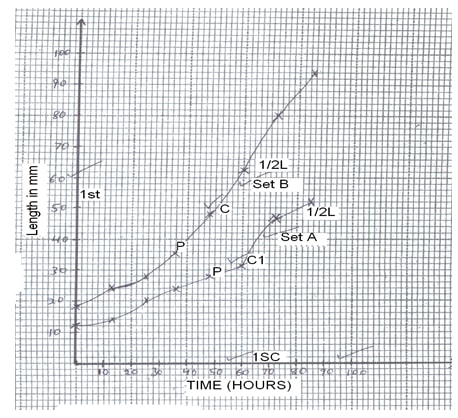
- A-37
B-67 - There is faster growth in B than A, this is to enable plant to obtain light;
- The plant would become very weak, and finally die; they will exhaust all the food reserve is the cotyledon ; since here is no photosynthesis due to lack of light;
- Oxygen supply; amount of water; amount of soil nutrients and temperature
- Labeling the axis ½ mark each — both (lmk)
-
-
- Leaves covered with thick/waxy cuticle; that is water proof /impermeable; to water; allowing for reduced rate of transpiration;
- sunken stomata; water vapour accumulate is the pits; reducing the rate of transpiration
- have few or no stomata on the upper surface of the leaf/more stomata or can lower surface sheltered from direct sunlight; the fewer the stomata the less the water loss from the plant
- Some plants have small stomata/small stomata/ pore; thus reducing transpiration rate
- Plants with small/needle-like leaves/spines; expose less surface area; hence reduce the rate of transpiration
- Leaves with shinny surface; reflects light resulting is reduced leaf temperatures; thus reducing the rate of transpiration
- Some plants have leaves covered with hairs/scales; which trap a layer of moisture; reducing the rate of transpiration;.
-
- Through genetic engineering, vaccines have been developed; that have proved effective in curbing the spread of diseases and providing immunity to populations;
- Important hormones have also been developed; for instance, insulin hormone; (has been produced through genetically engineered bacteria) that has been used in management of diabetes mellitus; growth hormones have also been produced; and used to remedy growth related problems in man;
- Through genetic engineering antibiotics have been developed; useful in curbing bacterial diseases;
- Genetic fingerprinting has been applied in crime detection;
- Genetics is applicable in blood typing; that is essential in blood transfusion;
- Genetic counselling has been instrumental in providing information to communities on genetic disorders; it also informs affected persons on the risks associated with the disorders;
Total : 14 marks Maximum 10 marks
-
- Homeostatic functions of the liver in mammals
Deamination; process of removal of an amino group from an amino acid molecule; the process gets rid of excess amino acids in the body; as the body is not able to store them; the amino group enters the ornithine cycle; where it is combined with carbon (IV) oxide to form urea; which is excreted in urine through the kidney; Heat production; many metabolic activities take place in the liver; releasing heat energy; that is distributed by the blood to other parts of the body; this helps in thermoregulation; Storage of vitamins and mineral salts; Vitamins A, B, D, E and K; are stored in the liver; worn-out red blood cells, are broken down to yield iron; which is stored in the liver in form of ferritin; this is used later in case of shortage; Formation of red blood cells; occurs in the liver of the foetus; the liver also breaks down old/exhausted red blood cells; leading to formation of more in the bone marrow to replace the worn-out cells; to enhance oxygen and carbon (IV) oxide distribution; Regulation of blood sugar level; liver cells convert excess glucose into glycogen and fats under the influence of insulin hormone; the stored glycogen is however converted back to glucose; when glucose levels are low; by the liver cells; under the influence of glucagon hormone; Regulation of plasma proteins; plasma proteins such as prothrombin and fibrinogen are manufactured in the liver using the amino acids found in the liver; they play a major role in blood clotting; that prevents excessive blood loss and infection at the injured area; other plasma proteins produced by the liver such as serum and albumen; contribute to the maintenance of osmotic pressure in the body; non-essential amino acids are also synthesized by the liver; for use by the body; Storage of blood; the liver is highly vascularised; hence it is capable of holding a large volume of blood when the blood vessels dilate during hot conditions; when the temperatures are low, the blood vessels constrict under the influence of theendocrine and nervous systems; hence less blood is stored in the liver; this contributes to thermoregulation; Detoxification; this is the process where harmful compounds such as drugs and poisons; are converted to less toxic compounds in the liver; toxicity is caused by medication, drugs and microorganisms; the toxic compounds are later excreted in urine; detoxification prevents the accumulation of toxins in body cells; which could lead to death or malfunctioning of the body cells; Max. 20 mks
Download BIOLOGY PAPER 2 - 2019 KCSE KASSU JOINT MOCK EXAMS (QUESTIONS AND ANSWERS).
Tap Here to Download for 50/-
Get on WhatsApp for 50/-
Why download?
- ✔ To read offline at any time.
- ✔ To Print at your convenience
- ✔ Share Easily with Friends / Students

